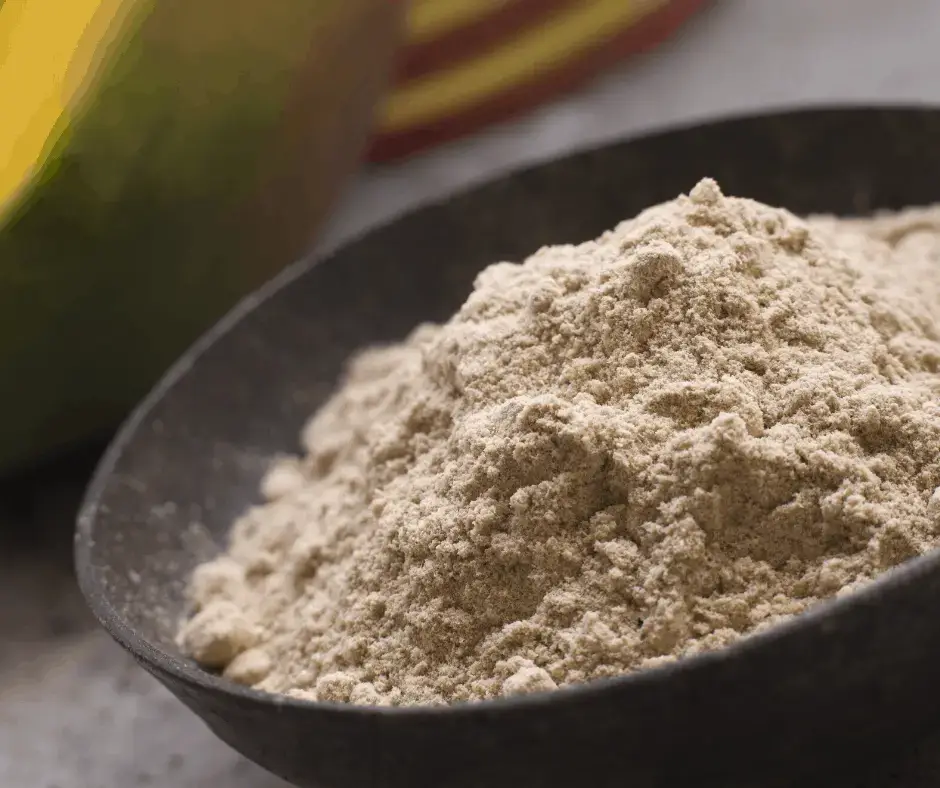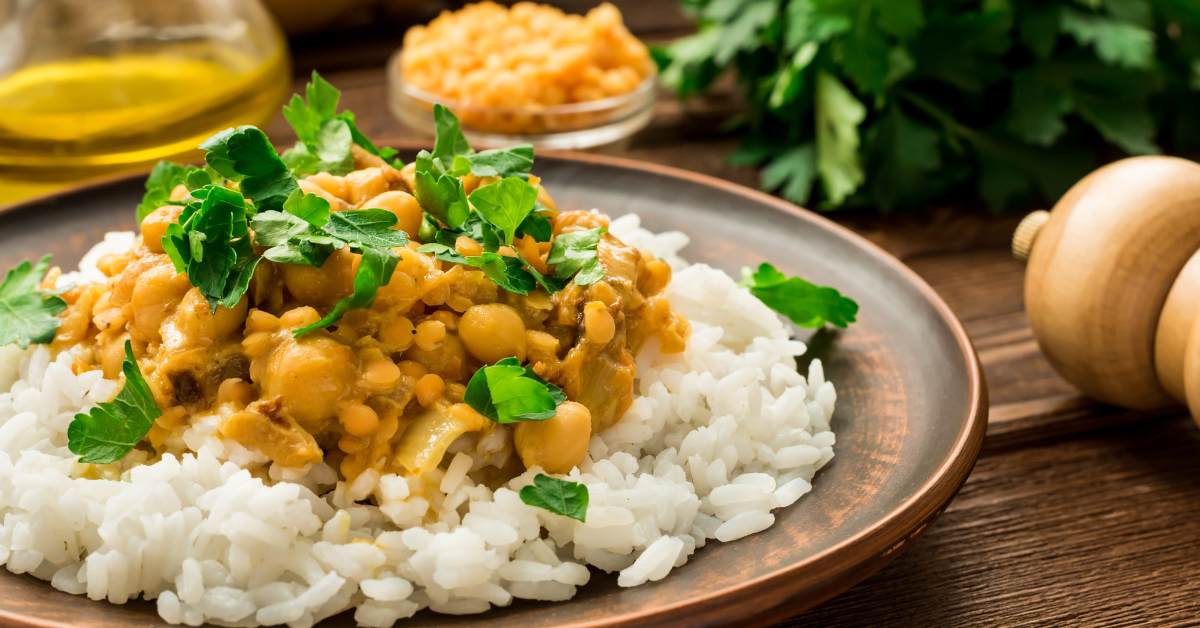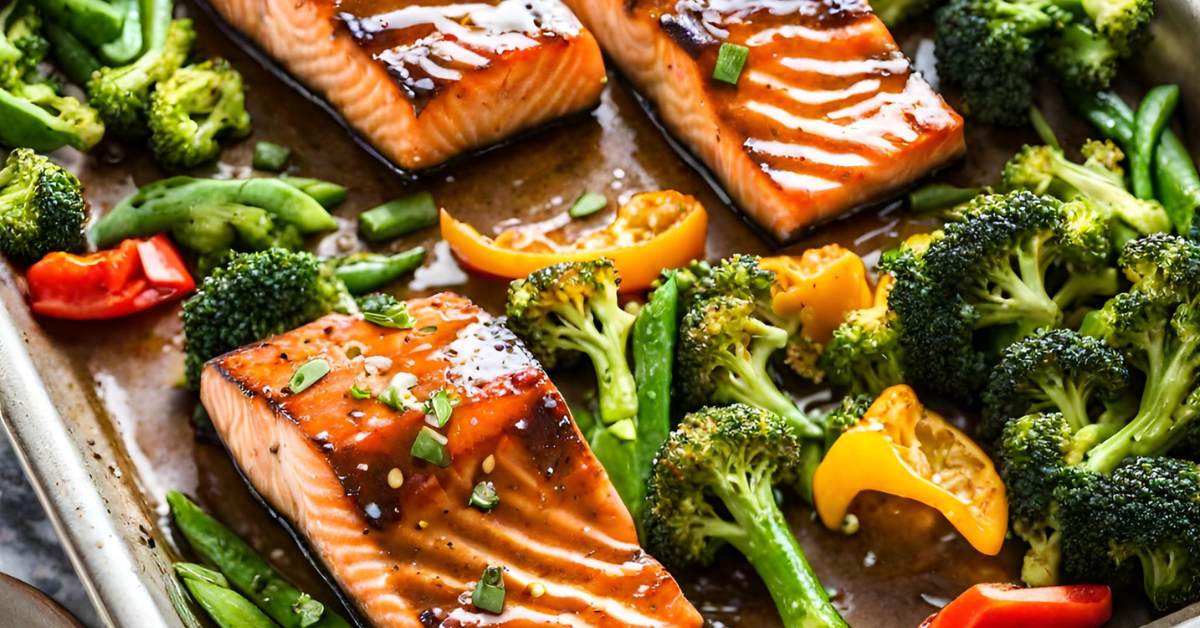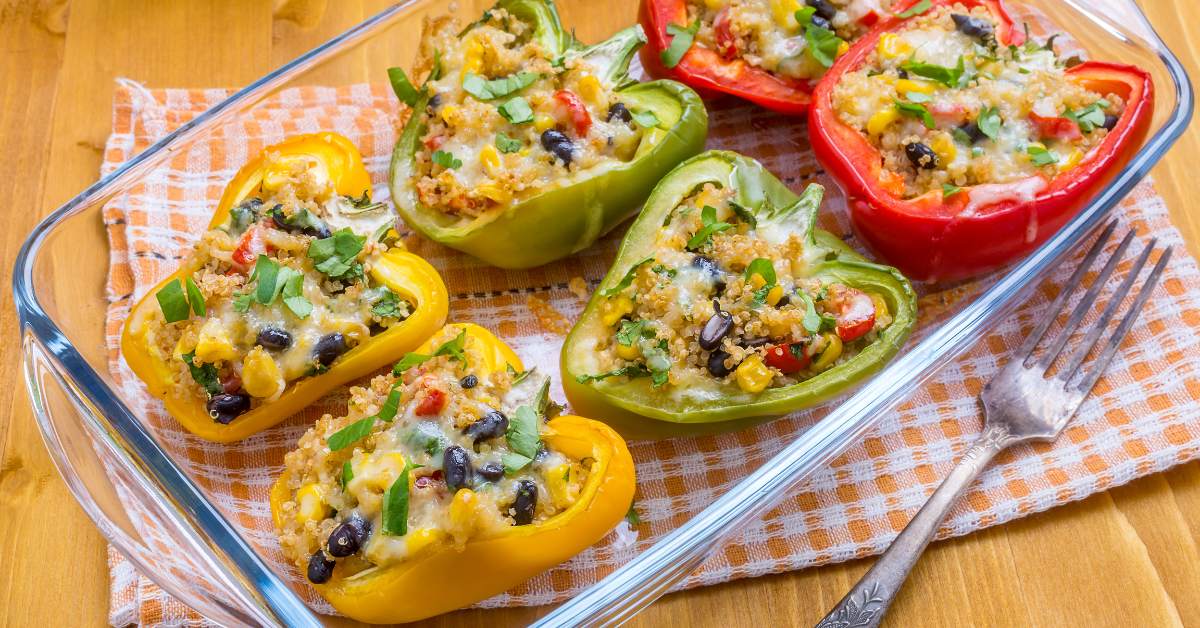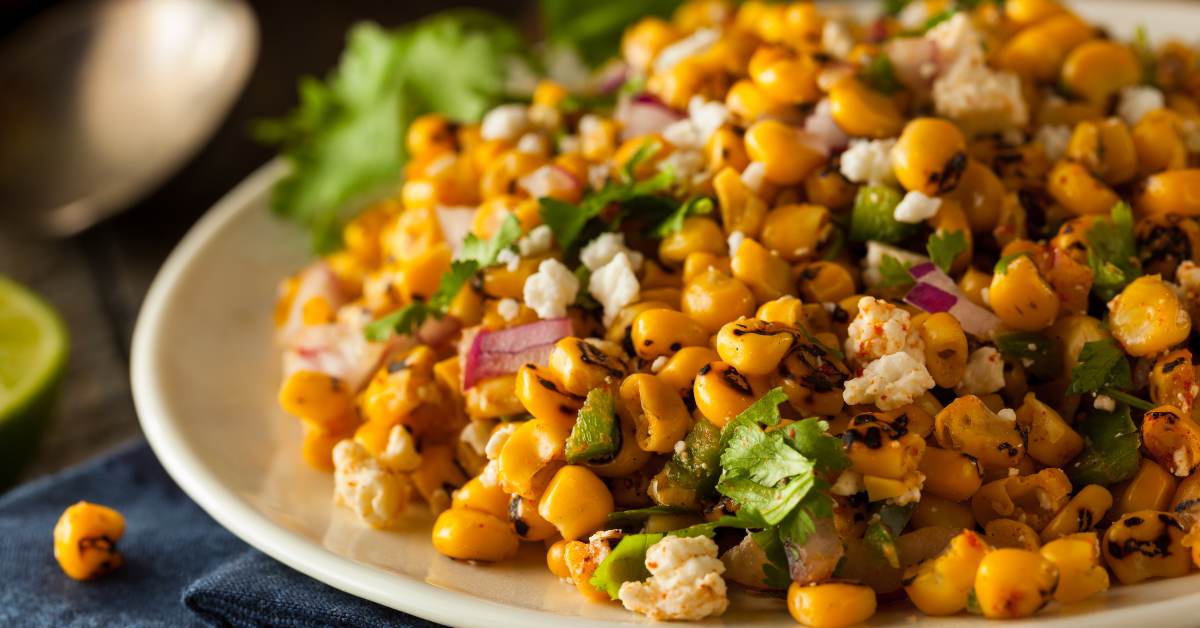As the average foodie might know, mango powder is a citrusy seasoning. It’s a spice powder made from dried unripe mangoes.
Most mango powder is produced in India where mangoes grow naturally well. However, by making the powder from fresh mangoes, people can enjoy the flavor and nutritional benefits when the fruit is out of season.
What you may not know is that while mango powder is the term that’s used to describe it in many areas, you may come across the term “amchur powder” and wonder what the difference is.
What Is Amchur Powder?
Amchur powder is the same as mango powder. The two names are used interchangeably, but it goes by amchur powder in certain cultures and regions like India. You may also see it spelled amchoor.
Most important thing to note is that amchur powder is made from unripe green mangoes.
How to Make Mango Powder
Many people prefer to purchase mango powder, but you can make it on your own fairly easily.
Since mangoes have a high water content, you want to plan to have at least 5 mangoes to make powder in order to end up with a decent amount.
Use medium-sized raw mangoes for the best results.
Start by washing and peeling the mangoes. A vegetable peeler is recommended to avoid losing too much of the fleshy part of the fruit.
Once peeled, you can then use the same peeler to slice the mangoes into thin strips or chips. You want the strips to be extremely thin, and a veggie peeler just makes that easy.
Spread the mango slices in a single layer on a large plate. Most people prefer using a steel plate that will help them to dry in warm weather.
Cover the mango slices with a dry cloth and place in direct sunlight for 4-5 hours. The following day, remove the cloth and toss the mango to agitate the pieces and allow for more even drying.
Then once again, cover the mango slices with another cloth and allow it to dry in the sun for an additional 4-5 hours. The third day, remove the cloth and toss the mango slices again.
They may not have dried yet so repeat this process daily until the mango slices are crisp.
If they’re rubbery or can be bent without breaking, then they need more time in the sun.
Here’s a more in-depth tutorial for drying mangoes in the sun if you need it.
Once dry, add the mango slices to a blender or food processor. Blend them until they form a smooth powder with no lumps.
Pour the powder into an air-tight container.
Now you have a supply of mango powder to use for recipes whenever you want!
Prices pulled from the Amazon Product Advertising API on:
Product prices and availability are accurate as of the date/time indicated and are subject to change. Any price and availability information displayed on [relevant Amazon Site(s), as applicable] at the time of purchase will apply to the purchase of this product.
Best Mango Powder Substitute
If you find yourself out of mango powder and need, there are a few spices and seasonings you can use in a pinch.
Just keep in mind that the dish probably won’t taste exactly the same.
Mango powder has a tart flavor with a fruity aroma and a mild sweetness. One good substitute is tamarind powder.
This is also a sour seasoning and mildly sweet. Many authentic Indian recipes use tamarind powder in much of the same ways that you would use mango powder.
However, the flavor of tamarind can be overpowering so always use this with caution. You can also use the tamarind paste if you don’t have the powder.
If you can’t find either option, then your next best bet is lemon or lime juice. While you won’t get the same flavor depth as mango powder, you will get tartness, which is a reasonable replacement.
Yummy Recipes That Use Mango Powder
1. Amchur Powder Chicken
This is one of my favorite recipes for chicken. The combination of flavors brings out a depth of tastes that will have you wanting more.
The marinade coats the chicken to provide a great bass flavor. The cooking method takes a while but it\’s well worth putting in the time.
This chicken can be enjoyed on its own although I often like to pair it with a salad or chutney.
2. Aloo Dum
For those that aren’t familiar with the name of this dish, it’s simply a potato and pea curry.
Whenever I want a lighter dish or go vegetarian for the day, this is one of my go-to recipes. The great thing about this recipe is that I almost always have all the ingredients on hand.
It’s simple to whip up and can also be scaled up or down if you want leftovers or are serving a crowd. This is also a good recipe to make for lunches and I often make a big batch for meal prepping purposes.
3. Chickpea Curry
Another great vegetarian dish, this is a good recipe if you have any diet preferences or allergies. It’s wheat and gluten-free with no eggs or dairy.
However, that doesn’t mean you have to sacrifice flavor. This curry uses a variety of spices including mango powder. It has a sweet-spicy flavor and makes a great main dish.
Keep in mind that it can be slightly too spicy for some people so consider using less cayenne pepper. You can always go up if you want an extra kick.
4. Chana Masala
This is a dish I love to order whenever we go out for Indian food. However, I was pleasantly surprised when I tried making it on my own.
Chana masala is heavily spiced but it wasn’t a complicated recipe. I had to make sure I had all the spices on hand although you can substitute some of the ingredients as needed.
I found this recipe that specified mango powder or lemon juice. I’ve made it both ways, but the mango powder is definitely the better choice.
Mango Powder Uses
Once you become familiar with the flavors in mango powder, you can start using it in your own cooking. This is a versatile seasoning and used in both sweet and savory dishes.
It’s most commonly found in recipes for curries, chutneys, soups, and marinades although you don’t have to stop there.
It’s often used interchangeably with tamarind due to their similar flavor profile but you’ll also see it used with meats.
The souring property of the powder makes it a great meat tenderizer so consider using it if you want your meat to be softer. You’ll find it to prepare sweet-sour dishes as well.
One great option is using it with barbecued foods as it can withstand high heat and retain its flavor. Kebab recipes frequently use this.
However, you don’t have to save mango powder just for meats. Since many Indian dishes are vegetarian, it’s used in many vegetarian dishes and gives them a better flavor.
Rice cooked with vegetables known as Biryani is great on its own but also goes well with the addition of mango powder.
The key to remember when cooking with dried mango powder is that a little goes a long way.
You may be surprised at how little of the powder that some recipes use. This doesn’t mean that you can’t add more but start off with the recommended amount.
It’s easy to add more along the way but too much can ruin a dish.
Also, if you make any substitutes in your dishes, pay special attention to the proportions to avoid overpowering the other flavors.
Mango Powder Benefits
Dried mango powder is rich in vitamins and minerals. It’s also a great source of antioxidants and contributes to your overall health.
If you’re familiar with the health benefits of dry mango, the mango powder has these same benefits. The only difference is that the dried mango powder comes in a more concentrated version.
Dry mango is so nutritious that I highlighted its many benefits in a separate article that you can read here.
Frequently Asked Questions
How do you ripen mango powder?
Since dried mango powder is made from green mangoes, it is not ripe. You can ripen mangoes before drying with ethylene. However, once the mangoes have been turned into a powder, they cannot be ripened.
Is mango powder good for you?
Yes, mango powder is rich in nutrients and supports a healthy body and weight. The powder has the same health benefits of fresh mango but is available in a more concentrated form.
Is mango dust the same thing?
You won’t often find products that are named mango dust. However, this may be the same as dried mango powder. Mango dust might be made from ripened mangoes and won’t have the same flavors as dried mango powder. Make sure to read the label in order to get the product that you want.


